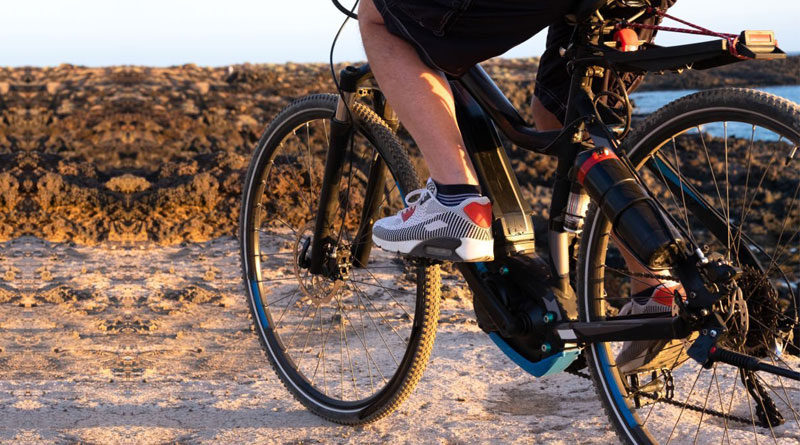Do I Need Gears In My Electric Bike?
If you have any idea about electric vehicles, you would know that electric drivetrains don’t require gears. Electric drivetrains are capable of producing high amounts of torque that can accelerate a vehicle extremely fast from a standstill. Teslas are the most common examples. But take a look at electric bikes and you would find gears. Why? Are gears really necessary for an electric bike? Well, no! Electric bikes don’t need gears. However, there are some advantages to having gears in an electric bike. This article is all about why electric bikes have gears when they don’t need them.
The Function of Gears in a Bike
The function of gears in a bike is to simply assist you with your pedaling. Gears on a bike allow you to maintain a comfortable pedaling speed, something known as cadence. Cadence is the speed of your pedaling. It is measured in rotations per minute (RPMs), that is, how many times you rotate the pedal in a minute. The average cadence for most riders is somewhere between 70 to 100 RPMs. Professional athletes can have a higher number.
Gears on a bike work in a similar manner as they work in a car or a motorcycle. Lower gears allow easier pedaling to gain motion from a standstill. Higher gears allow you to achieve and maintain high speeds. In short, you shift to higher gears as you gain speed and shift to lower gears as you lower speed, just like in an automobile.
Why are Gears used on an Electric Bike?
As I mentioned above, gears are not required in an electric bike. But, depending on the situation, having gears can have advantages. Gears are mostly used as a backup for when the battery runs out on your electric bike. Battery drain usually happens on long distances or while climbing steep hills frequently through your ride. You don’t want to be stuck with a single gear in these situations. But with better battery technology, this advantage is gradually becoming obsolete.
Another reason to use gears on an electric bike is to prolong the battery life on your electric bike. Gears allow you to strike a balance between the work you and your motor will be comfortable doing. If your motor does all the work, it won’t last long. If you do all the work, what’s the point of having a motor then? But if you and the motor work together, you can go long distances on your electric bike with ease.
Why Not Just the Pedal Assist?
Pedal assist provides great aid to a bike rider. But you can’t rely on just the pedal assist to do all the work. The word pedal “assist” should be self-explanatory; it only assists. You might as well get a motorbike if you want the bike to do all the work.
Obviously, heavily relying on the pedal assist while the rider does little work will drain the battery faster. Furthermore, pedal assist can’t tackle steep hills on its own; the motor may simply not be powerful enough. Not to mention, electric bikes are heavier than conventional bikes. Again, it is not a motorbike.
However, pedal assist is replacing gears in newer electric bikes. Modern electric bikes come with torque sensors that measure your pedaling intensity. The sensor directs the battery to release different amounts of current to the motor. The motor delivers different levels of speed based on the amount of current it gets. It’s sort of like having virtual gears.
The advantage of having a pedal assist with a torque sensor is that the transition between gears is smooth. The rider pedals faster to get more assistance from the motor – more speed – and vice versa. You don’t have to fiddle with anything on your handlebars. The chain also doesn’t move up and down physical gears so there is less wear and fewer faults because of fewer parts.
The disadvantage is that new technology is not cheap. You would only find these gearless systems on premium bikes that cost more than a car in some cases. But longer-lasting batteries are making these gearless electric bikes more popular.
What Types of Gear Systems come in E-Bikes?
Gear systems have been present in bikes for a long time now. It’s safe to say that gear systems have come a long way, and so have electric bikes. Recent advancements have seen much better gear systems being introduced on electric bikes.
Following are the types of gear systems you would find on electric bikes these days:
The Classics
Two types of classic gear systems found on electric bikes are as follows:
Derailleur
The majority of electric bikes are equipped with a derailleur gear system. It is an external gear system with a derailleur at the rear connected to the gear levers on the handlebars via a cable. A change in the cable tension makes the derailleur guide the chain into different sprockets of the cassette.
A derailleur gear system is commonly found on bikes intended for sports or competitions. Derailleurs are lightweight, provide a wide range of gearing options, and are claimed to be more efficient. But what makes derailleurs common overall is that they are a budget option that is easier to maintain or replace if damaged.
But the exposed design of a derailleur requires frequent maintenance. It collects dirt and becomes noisy while the gears become rough and hard to shift. Although a derailleur is quite tough, its open design also makes it prone to damage while riding. But an impact that severe is a rare occurrence. Jumping several gears at once is not advisable on a derailleur nor shifting while stationary. Doing so can cause damage to the cassettes or the derailleur.
Hub Gears
The hub gear system is a major alternative to the derailleur gear system. It comes in different speed options from 3 to 14 gears. The 8-speed is the most common you will find. The more the number of gears, the more expensive the system is going to be.
Hub gears require very low maintenance. The enclosed gears are not exposed to elements. The chain also lasts longer as it doesn’t change sprockets on a cassette. Contrary to derailleurs, you can shift many gears at once while you are stationary making hubs great for city riding. Hubs are also compatible with belt drives.
But hubs are far more expensive than derailleurs while offering fewer gear options. You would have to pay even more to have more gears on your bike. Although hub gears are more reliable than derailleurs because of being enclosed, it needs an expert if something does go wrong. Taking the wheel off also becomes difficult.
Advanced Gear Systems
Advanced gear systems are relatively new in the market and are not common yet. The following types of advanced systems can be found on electric bikes:
Continuous Variable Transmission (CVT)
Yes, it’s the same concept as in Toyotas or Hondas, etc, but designed, of course, for an electric bike. The CVT is always in gear and it’s impossible to get out of gear, yet, there are no set numbers of gears. Pressing a button or twisting a handgrip on the handlebar moves the gearing up and down the range.
CVTs are extremely easy to use. You can select how hard or soft you want your pedal assist to be. Require very low maintenance because of having fewer parts and no cassettes. The newer automatic CVTs come with torque sensors and drive just like an automatic car. You don’t have to do anything except pedal.
The sensor measures pedaling intensity and it directs the battery to provide current flow to the motor accordingly. The harder you pedal, the more assistance the motor provides – more speed – and vice versa. Premium bike manufacturers are moving to automatic CVTs because of longer-lasting batteries, more efficient motors, and ease of use.
But as with any new technology, it can cost you both of your kidneys. Electric bikes with CVTs are usually flagships that are top-tier and expensive. Electric bikes with automatic CVTs are even more expensive than mid-range sports motorcycles in some cases. These systems are also heavier than other gear systems and also require bigger batteries to last longer.
Wireless Shifting
While wireless shifting isn’t exactly a gear system, it is definitely a hi-tech feature you can get in an electric bike. Wireless shifting was first introduced with derailleurs to make shifting smoother, faster, and more accurate. Lacking cables also gives a cleaner look to the bike. There are sensors on the gear levers on the handlebars and a small motor on the rear with the derailleur that changes gears.
Manufacturers claim that the sensors can calibrate themselves so riders won’t have to deal with frequent adjustments and also with cable-related issues. It is a relatively new technology with little support. It’s also heavier and susceptible to electromagnetic interference, not to mention, more expensive.
How Many Gears do I Need on my E-Bike?
How many gears you need depends on the terrain you ride. The easier the terrain, the fewer gears you need. For flat city rides, a single-speed electric bike will suffice. For a challenging terrain, you would need a wide range of gears. If you can afford more reliability and less frequent maintenance, then go for hub gears. If you want a lightweight budget-oriented setup, derailleurs are a better choice. The newer tech is more suited for those who are new to biking as it is easier to use. Being new, these technologies still need to prove their worth.
Final Thoughts
Electric bikes don’t need gears. But having gears have advantages. Gears can serve as a backup if the battery runs out and to prolong battery. The number of gears you have in your bike depends on the terrain. Fewer gears are required for easier terrains and vice versa.
There are different types of gear systems you can get in electric bikes with the most common being the derailleur setup. Hubs are a common alternative but they are expensive. If you are looking to go all out on your budget, then you can get automatic CVTs as well which can cost you more than a mid-range sports bike.




